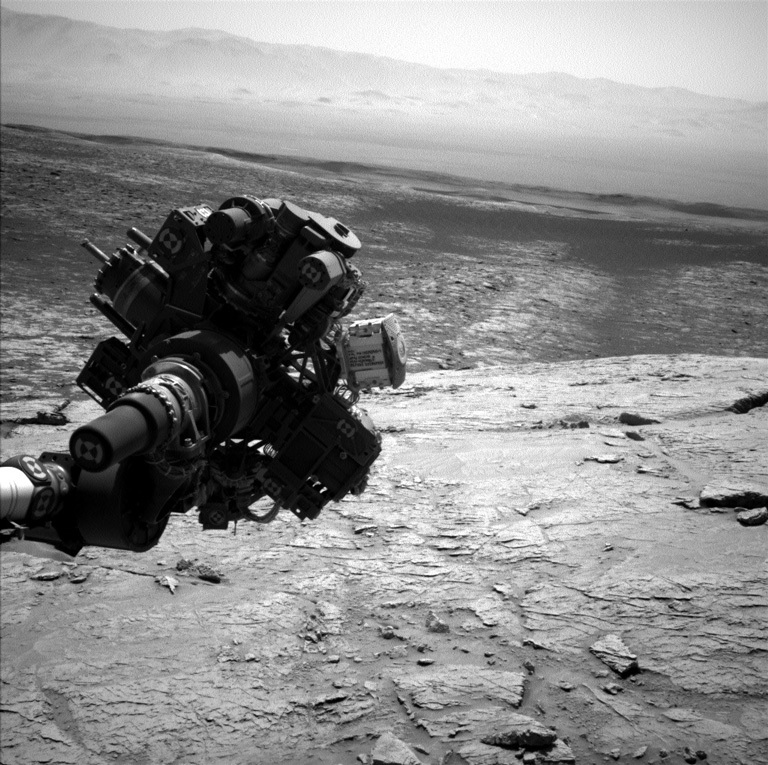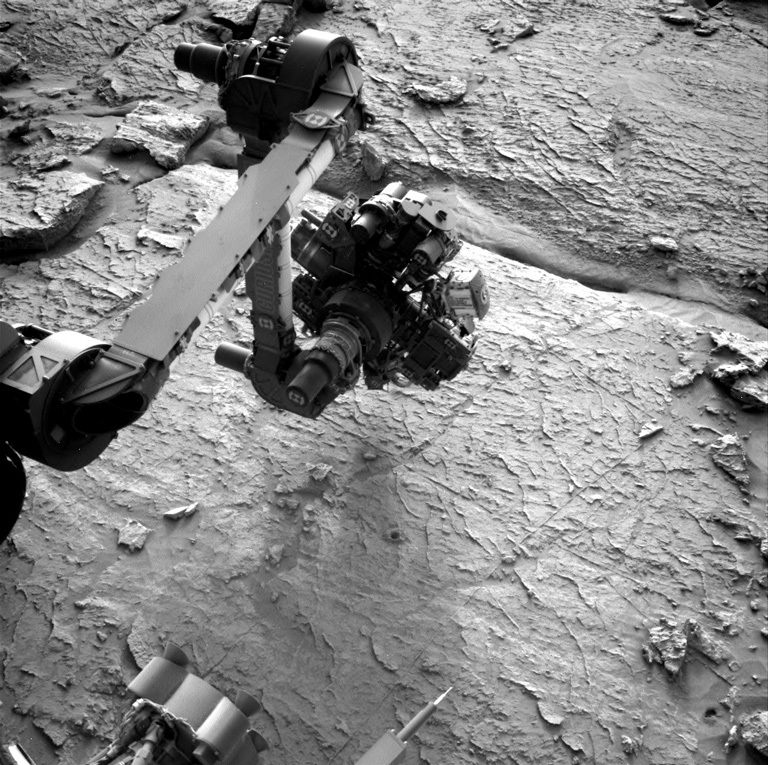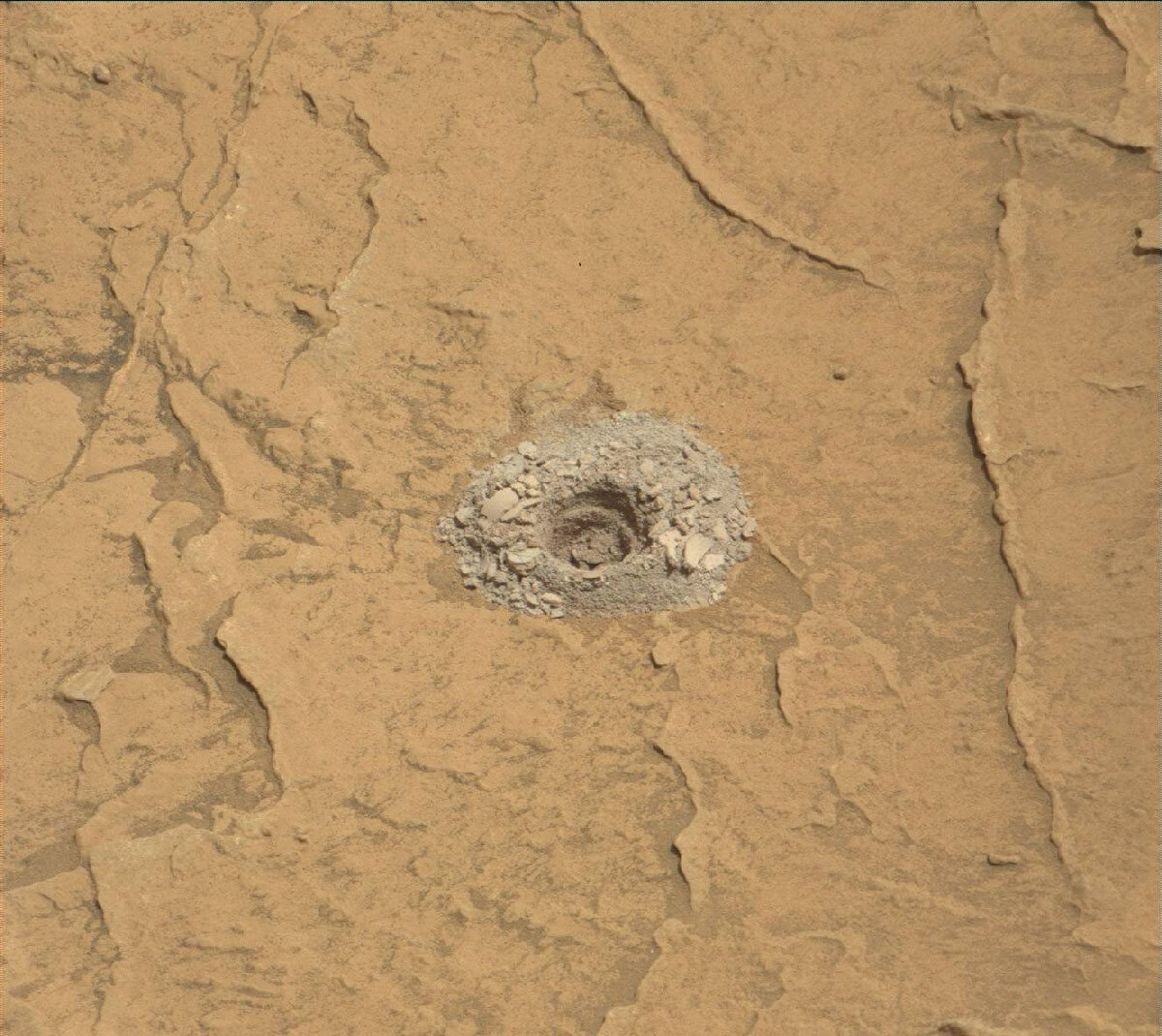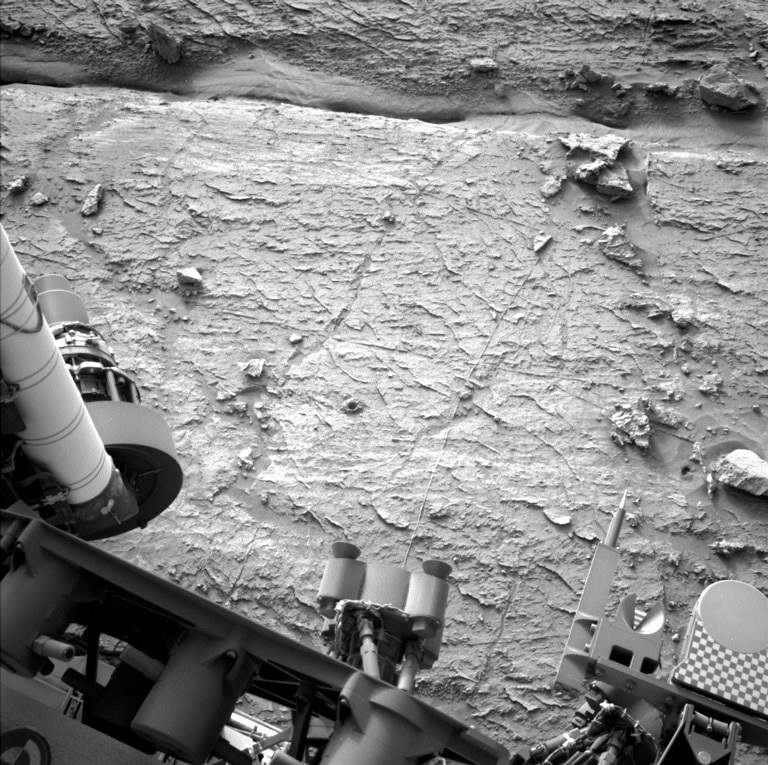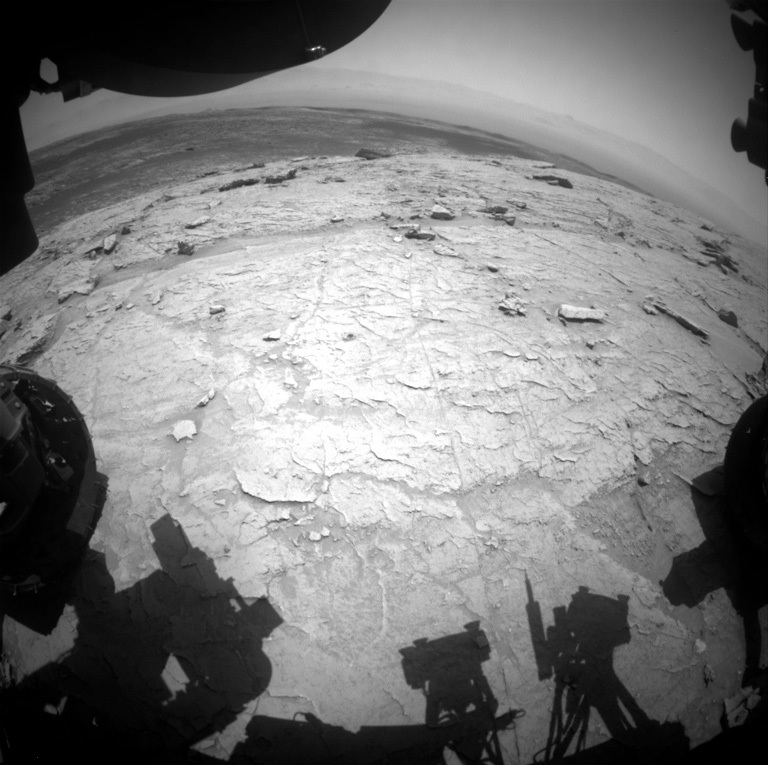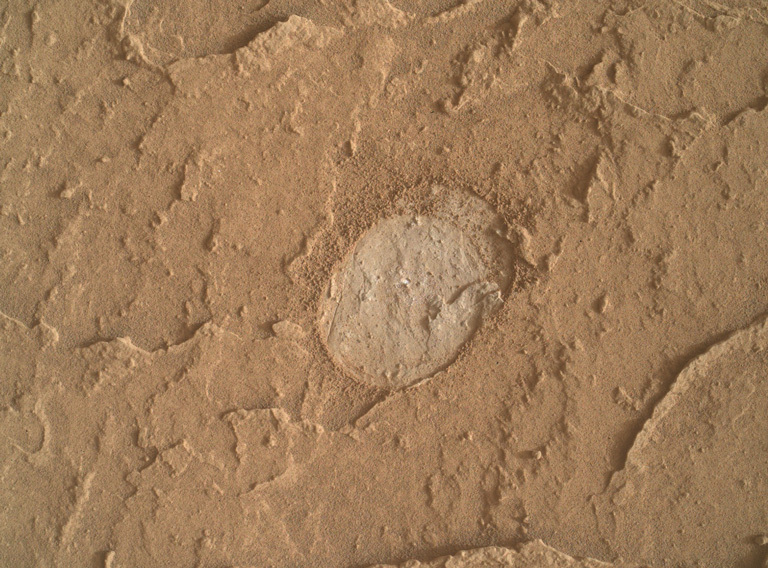May 4, 2021
Sol 3109: Oh, 'Caneda!'
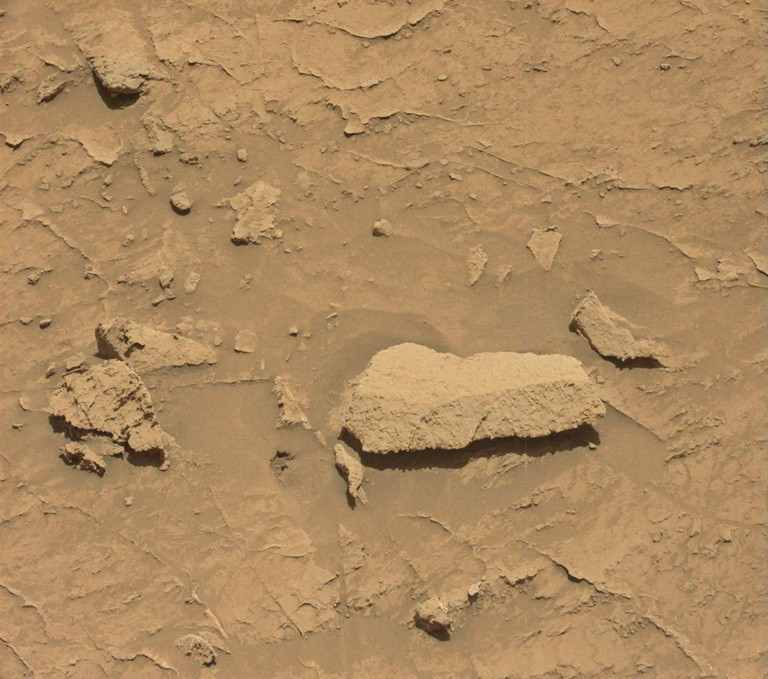
This image of the target named "Auriac" was taken by the Mast Camera (Mastcam) onboard NASA's Mars rover Curiosity on Sol 3107. The Auriac rock is roughly the size of an American football and is characterized by nodular textures along its sides. Credit: NASA/JPL-Caltech/MSSS. Download image ›
Following a few small hiccups with different rover activities recently, Curiosity has a fully packed plan today! The MAHLI dust cover successfully closed yesterday, allowing us to move the robotic arm out of the workspace and to use it for a quick APXS analysis on a nearby rock target named “Auriac.” The Auriac rock is roughly the size of an American football and is characterized by nodular textures along its sides. The top of Auriac is relatively smooth, which is thought to be indicative of erosion as opposed to a change in rock properties within the relatively small target. ChemCam will also acquire a 5x1 LIBS raster on a target named “Sarlat la Caneda,” which is a typical patch of local bedrock with some interesting veins cutting through it. In addition to these two chemistry measurements, Mastcam will complete the imaging of the local bedrock surroundings, while ChemCam will also acquire a long-distance remote image mosaic of a target on "Mt. Sharp" that was first imaged about three years ago from a very different vantage point further downslope on Mt. Sharp. It will be really interesting to see how this new view will help us to understand the sedimentary structures exposed within Mt. Sharp. After these measurements, Curiosity will head east to a different bedrock region that shows evidence for additional alteration and diagenetic features including veins and “fin-like” features. The plan is for Curiosity to park at this new location for a few days before continuing her trek up Mt. Sharp over the weekend.

